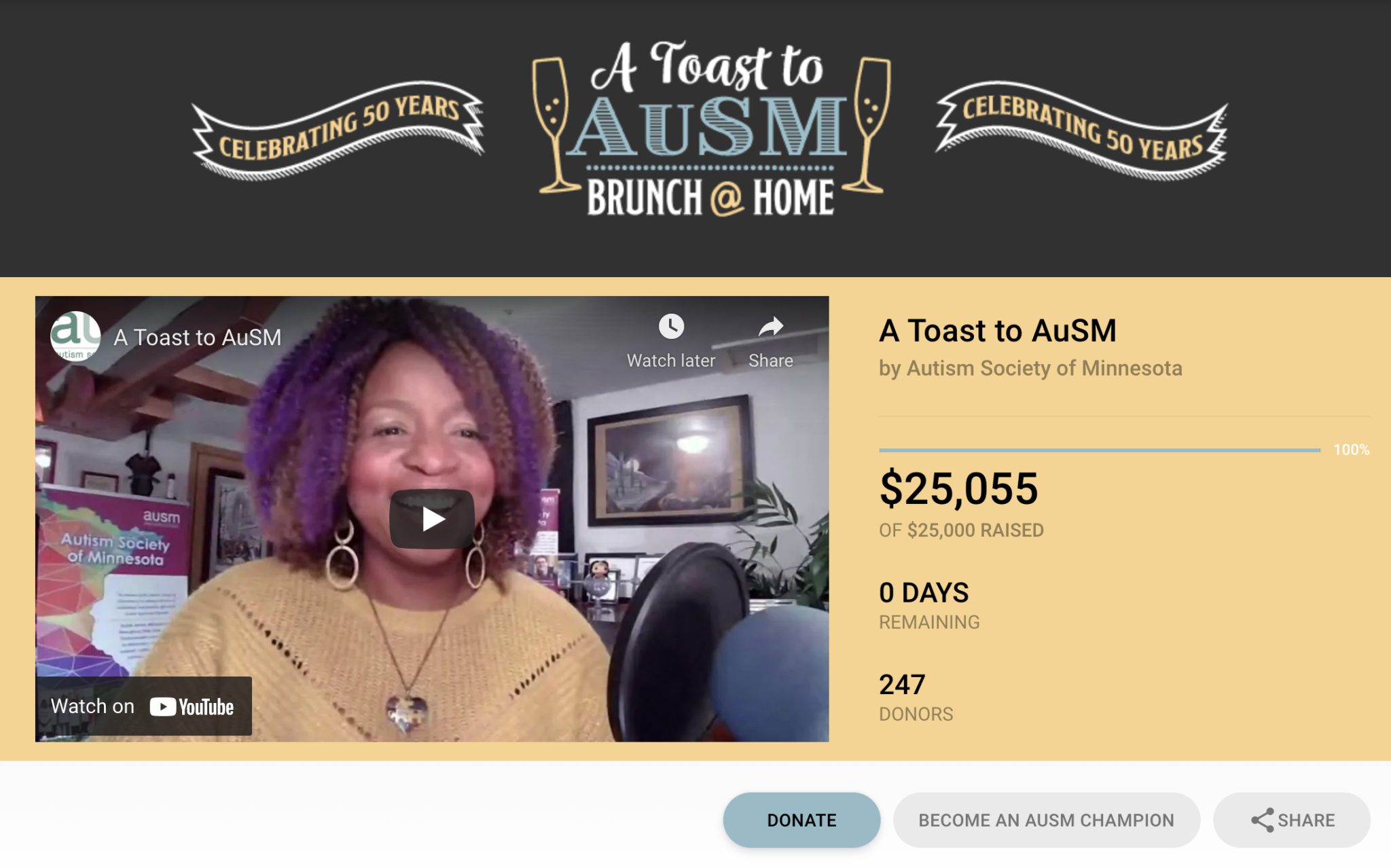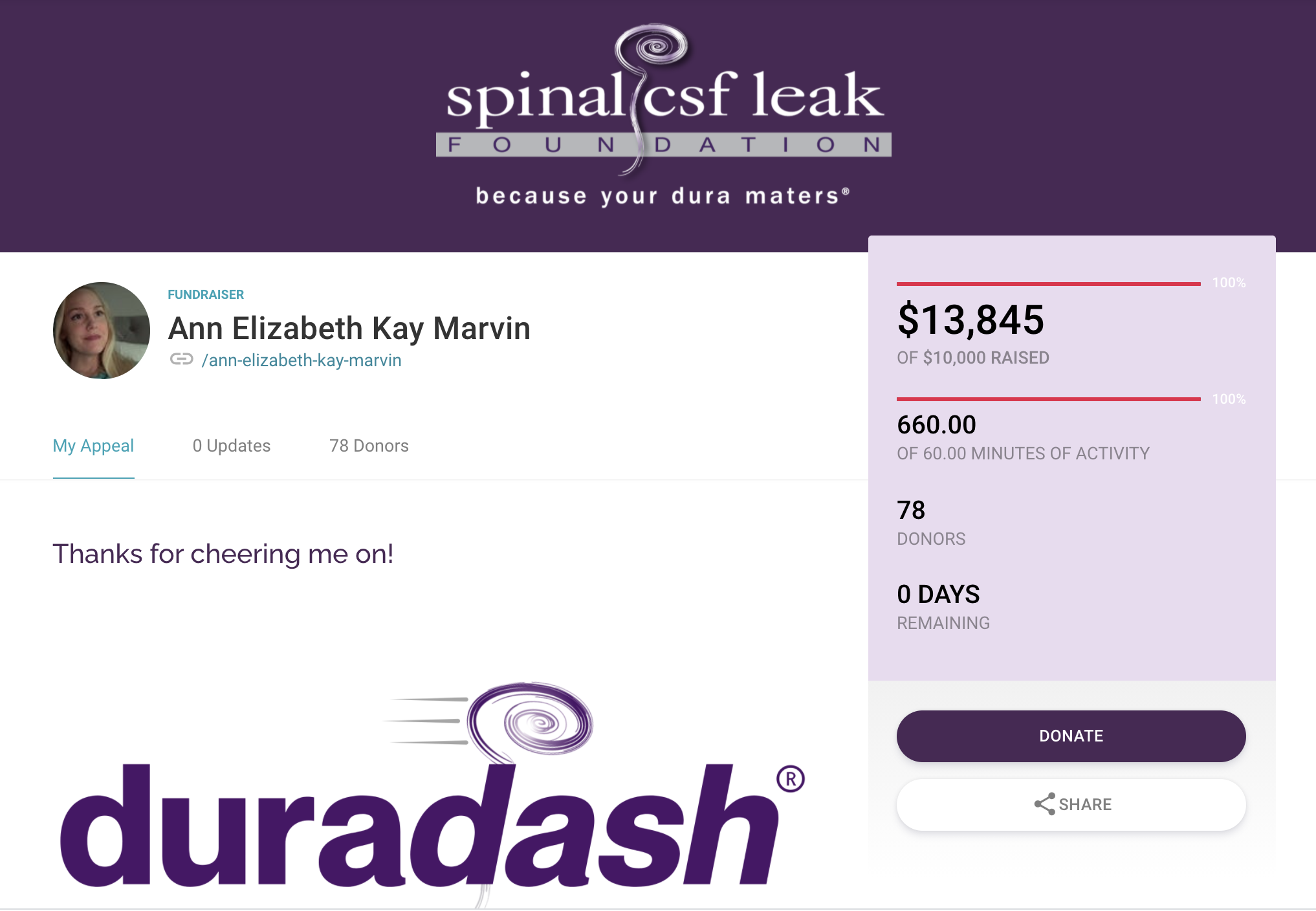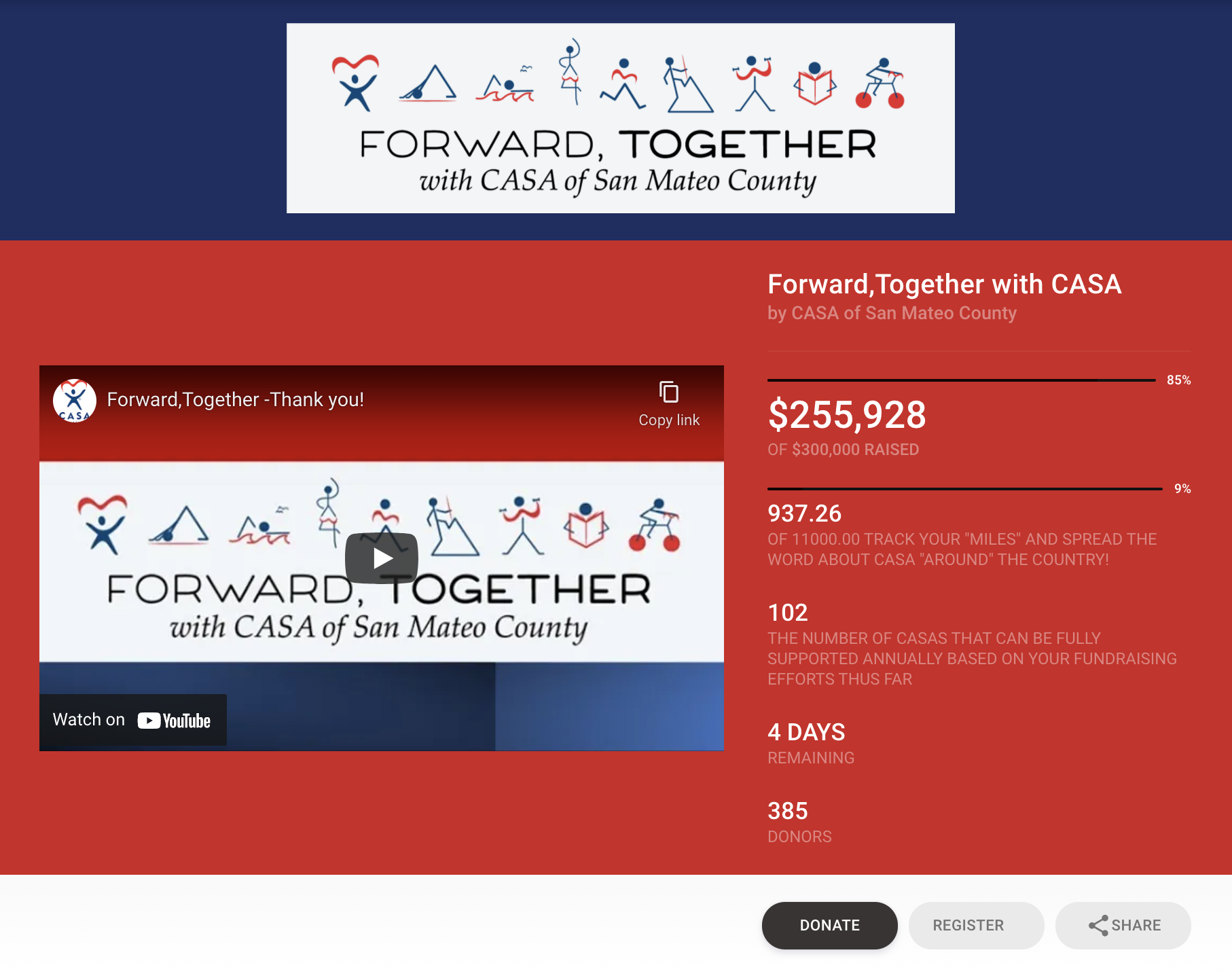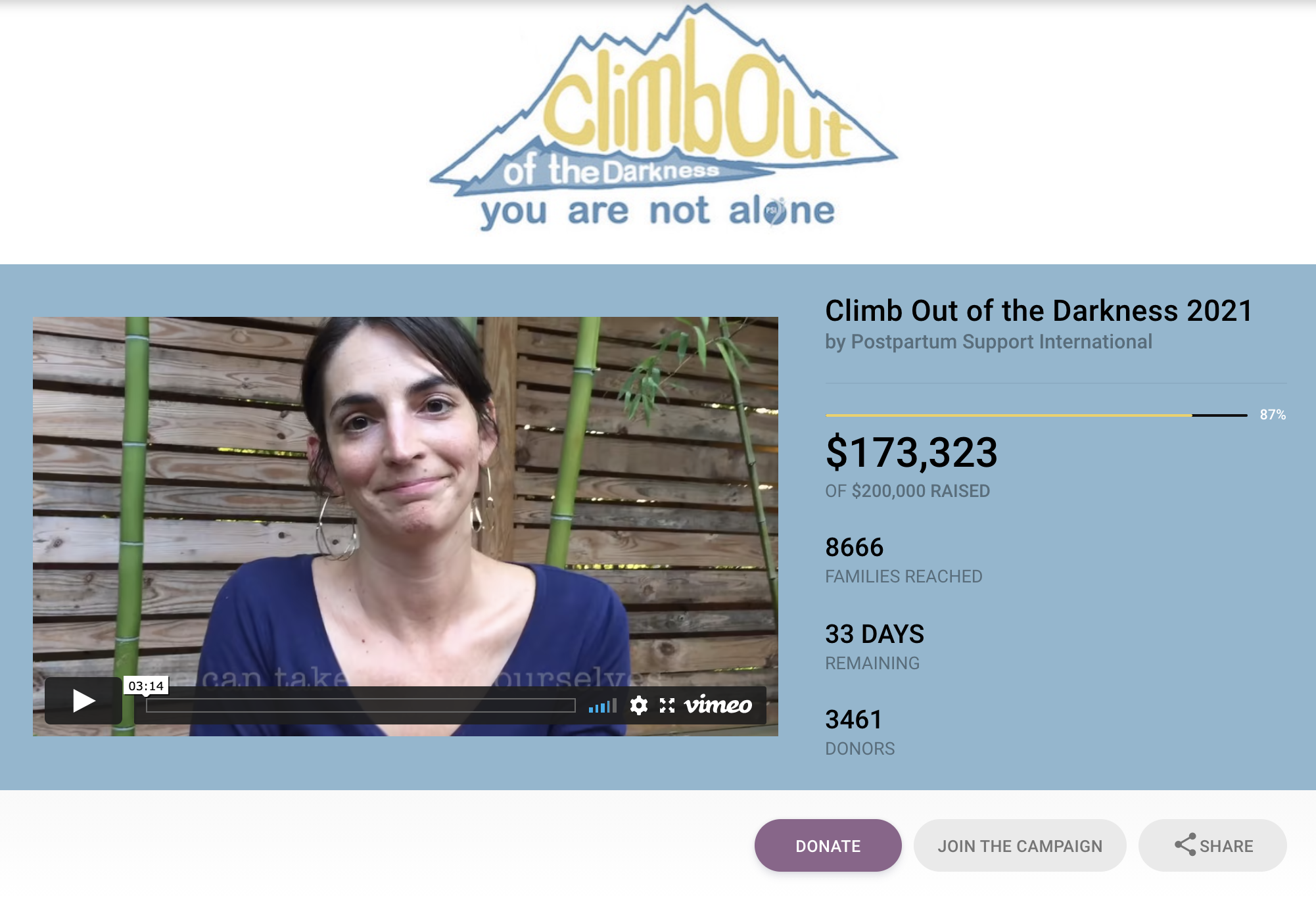The last couple of years have been all about virtual when it comes to fundraising. Thanks, coronavirus. But out of this huge challenge, we’ve seen some amazing creativity crop up as nonprofits revamp their fundraising approaches to be safe and successful. We’ve seen crowdfunding and peer-to-peer fundraising websites that knocked our socks off this year.
Of course, we’ve spent the year sharing tips and tricks to get your virtual fundraising to the next level all year long, but let’s be real: few things are as helpful as seeing real examples of real nonprofits doing it right. So here it is: our favorite 7 crowdfunding and peer-to-peer website examples from 2021. You’ll see what they did, what made it stand out, and the elements of their success. Let’s take a look.
1. A Toast To AuSM
The Autism Society of Minnesota (AuSM) has hosted a gala for the last four years, but in 2020 and 2021 they knew it wouldn’t be an option.
They made the decision to pivot to a different kind of event: an online brunch fundraiser based on the peer-to-peer model called A Toast to AuSM – and it’s one of our top crowdfunding and peer-to-peer website examples from 2021.
They recruited some of their strongest supporters to act as “AuSM Champions” and run peer-to-peer fundraising pages, then invite all their friends to a livestream event full of cooking demonstrations, personal stories, and drawings. Participants could cook along with celebrity chefs and have brunch at home. Many of the fundraisers also hosted Zoom watching parties of the livestream program.

Even though it was a first time event, they met and exceeded their goal of $25,000. So how did they do it? There were a few outstanding elements of this fundraiser that set it apart from the crowd:
- A creative livestream that kept folks engaged: they had personal stories, cooking demonstrations, a local comedian as a host, and live raffles! Who wouldn’t want to watch?
- Super fun branding: they wove the theme of brunch throughout all of their materials and graphics to help it stand out and to give participants a cohesive feel.
- A sense of connection: this event happened in February 2021, a time when many people were feeling particularly isolated. By inviting their fundraisers to host Zoom watch parties, AuSM gave people a chance to feel connected to each other.
But success in an online fundraiser goes further than just getting the attention of potential donors. AuSM had some additional elements that let them take those audience members from “interested” to “donor”. Check out some of the reasons for their success:
- They relied on their personal networks to build the peer-to-peer fundraiser, starting with board members and then bringing in their strongest supporters.
- A stellar toolkit: to help out their fundraisers, they put together a resource that answered common questions, provided basic fundraising advice, and laid out scripts for fundraisers to use.
- It was incredibly easy to set up a fundraiser or make a donation. Once someone made it to the CauseVox page there was no barrier to clicking that button and giving.
2. Duradash
The Spinal CSF Leak Foundation is a relatively young nonprofit that was still finding its legs when COVID hit. In years past, their annual Duradash fundraiser raised about $5000. In 2021, they used CauseVox to create their Duradash peer-to-peer campaign and came away with over $30,000 through their virtual activity challenge – and it’s one of the best peer-to-peer website examples from 2021.

What did they do that made their campaign unique?
- Flexibility: this was particularly important for the audience that Spinal CSF Leak Foundation was trying to reach because many of their participants are bed bound. They invited participants to track their minutes of any activity, from running to reading.
- Recognition: to help keep costs down, the foundation decided not to send people awards, but that doesn’t mean they ignored their fundraisers. Every fundraiser received a digital award that was highlighted on social and personalized for them.
- Being where the donors are: the foundation knew that most of their community spent a lot of time online. They brought the fundraiser to their community instead of asking donors to come to them.

There were also some great lessons they learned along the way that helped them to be successful. Here were their takeaways:
- They recruited a group of super volunteers they called the “Durables” to share on their own social media pages and increase excitement. Relying on the people already in your network goes a long way.
- The ease of the platform is everything. Executive Director Andrea Buchanan said “Our Duradash fundraisers are really loving the CauseVox platform! Everyone I’ve spoken with has found it easy to use, and even though the event doesn’t officially start until May 29, we’ve already raised over $10,000, which is just fantastic.”
- They focused on ROI: a successful campaign doesn’t simply bring in a lot of money, it also keeps the costs low. They did this by focusing all their efforts online.
3. MDLT Virtual Hikeathon
Last year, Mojave Desert Land Trust ran their first Miles for MDLT event as they moved all virtual in response to COVID. In 2021, they brought back the event, including all the lessons they had learned in 2020. They challenged participants to hike trails in the Mojave Desert and fundraise as they went. For people who weren’t local, any park was a great alternative.

You might be thinking “a basic walkathon style event? How did they do so well?” Even though MDLT took a standard format, they did some things to make the event fit their audience and their needs. Here’s how they tweaked a classic to make it work for them:
- They used their resources. In this case, that was the park itself. By asking fundraisers to hike through the desert, they showcased the landscape they work to preserve, and provided a reason for people to participate: it’s beautiful.
- They used CauseVox’s activity metric to allow fundraisers to showcase their progress towards a goal of miles hiked. This gives people a sense of accomplishment and lets their supporters cheer them on.
- They tailored the prizes for their event to the theme of the event: in this case they had prizes donated from Patagonia, which makes a ton of outdoor gear.
Beyond personalizing the event type for their audience, MDLT also used some best practices in the way they ran their peer-to-peer fundraiser. Here’s what you can mimic to get the most bang for your buck:
- Rely on the experts! Colleen McGrath, Development Manager at Mojave Desert Land Trust was new to peer-to-peer fundraising online and had some nerves about setting things up. But she said that “Jenna [CauseVox Customer Success] took time to help set up the website, but once I got in there it was super easy to use.” If great customer support is available, use it!
- Colleen also made sure to create a robust template for her fundraisers with boilerplate language and images. This made it even easier for fundraisers to get set up and get started. But what took it to the next level was when fundraisers personalized their pages with unique content and ongoing updates.
- One of the most beneficial aspects of running a peer-to-peer fundraiser is that you get new acquisitions because your fundraisers reach out to their contacts. MDLT made sure to focus on bringing these new acquisitions into the organization with ongoing communication.
4. Woven Health Virtual Awards Ceremony
Woven Health Clinic began their year planning an in-person fundraising awards ceremony but quickly realized that in-person needed to become virtual.
Despite having a board that wasn’t comfortable with social media or virtual fundraising, they turned to CauseVox and created a virtual awards ceremony event that knocked their fundraising goals out of the park. They doubled their original goal and brought in over $140,000 during the campaign.

A virtual awards ceremony was a relatively new idea to us, and we loved the ways that Woven Health made it their own. Here’s some of the wonderful elements they included to make it a home run:
- The campaign was the essence of grassroots. They started by asking each board member to send emails to their networks and then share on social media, and grew it from there.
- The luncheon focused on giving awards to outstanding members of their community. This was a powerful way to bring attention to the award winners’ networks and followers.
- Their luncheon program went a long way: historically the luncheon has been held in person, and it had been a struggle to sell tickets. But viewers actually seemed to prefer the digital livestream. It was easier to access and didn’t require them to dress up, go out, and deal with all the stress of a night out.
These pieces came together for an amazingly successful event. But the fundraiser also included some great fundraising strategies that took it to the next level.
Success:
- Because of the templates, her fundraisers felt supported: they didn’t have to start from scratch and could use some of the copy explaining Woven Health Clinic’s work. But the personalization is what truly appealed to donors. When Lisa set up her fundraising page, she wrote from her perspective as the Executive Director. But other fundraisers spoke about their own experiences and love for the organization. It was their passion that inspired their family and friends to donate.
- While Woven Health Clinic did create templates for their fundraisers to use, what really took them to the next level was the way in which each fundraiser personalized their page. Each fundraiser shared how they were connected with Woven Health and talked about why they cared for the organization.
- One of the most underutilized elements of the donation form is your donation tiers. But Woven Health took time to focus on building strong donation tiers and it paid off. They made sure that each tier was clearly tied to an impact, so that donors could see where their donations were going, and they added in monthly tiers.
5. Forward Together With Casa

CASA of San Mateo County landed as one of our top crowdfunding and peer-to-peer website examples from 2021 because they took an inclusive approach to their fundraiser this year. As an organization that pairs kids in the foster care and juvenile justice system with mentors, they wanted to build community and invite everyone to participate. They hosted a run, but gave tons of options for people to engage at any level, from a 5k to a full marathon. With so many options, it was impossible for people not to join in.
Of course they didn’t just stop there. Here are some of the things they included in their campaign to entice people to join:
- Throughout the campaign they held raffles. To enter, you had to donate or fundraiser. Who doesn’t want a chance to get a little something special?
- They shared plenty of updates on their CauseVox page throughout the campaign so that all their supporters knew when they were approaching a goal, or when something exciting (like one of the aforementioned raffles) was taking place.
- In one of their updates, CASA shared a video from a health coach with tips and tricks. It’s always a great idea to provide information or something of value to those who are participating.

With all of that it’s no surprise they had tons of participants. With so many people on board, CASA had to make sure that they were also using best practices to take these participants from interested to donating and fundraising. Here’s what they did to hit and exceed their goal.
- CauseVox offers quite a few ways to track your progress, and CASA made use of all of them. They let people track through their activity metric, they set an impact goal, and they had a general dollar goal. Together, all of these helped to incentivize giving in a wide variety of ways.
- Fundraising campaigns aren’t just about individual donors: they’re also about sponsors. CASA brought in a huge list of sponsors who made their success possible.
- CASA encouraged team fundraising, and found that they had great support when they encouraged teams from their board, and local businesses who wanted to support them.
6. Building Beyond Tomorrow

After over a year of social distancing, the Girl Scouts of North Carolina Coastal Pines needed some extra support to help the kids in their troops to feel safe, connected, and comfortable. They launched the Building Beyond Tomorrow campaign, a peer-to-peer fundraising campaign focused on the girls they serve.
There were some incredibly cool elements that they included to help bring their community together.
- While they kept their tone positive, they didn’t shy away from sharing how the pandemic had impacted them and the girls in their troops. Check out their wonderful call to action: “For over a year, it seemed like sickness and anger were all around us. Now, it’s time to heal. Girls say that Girl Scouts gives them the accepting, safe space they need to get through challenging times. We see those girls then Take Action in their communities and give back to others. We need you to Take Action with us so that, together, we can bring healing to girls’ hearts, minds, and communities.”
- Everyone loves Girl Scout cookies. This is a fact. The Girl Scouts of North Carolina Coastal Pines took advantage of the resource they had (and yes, that resource is cookies). They held a drawing and gave a lucky person the chance to try a new cookie flavor. While you may not have Girl Scout cookies, you probably have some resources that are in your favor: take advantage of them!

In conjunction with these great community building plans, the Girl Scouts used some strong fundraising strategies that helped them hit some amazing goals.
- They used specific donor challenges throughout the campaign and had goals for each day. For example they had an anonymous donor who pledged to donate $50,000 once they hit $50,000, which helped incentivize donors. On a smaller scale, they had donors who pledged to give $1000 if 25 people gave in one day.
- They clearly connected the fundraiser with the people it impacted. Not only did they share a video with statements from people who are impacted by girl scouts, they also had an amazing statement that made it so clear how the donations would be used: “Your donations to this campaign will ensure that finances are not a barrier for any girl who wants to be a Girl Scout.”
7. Climb Out of the Darkness
Postpartum Support International (PSI) is an organization that supports mothers managing mental illness postpartum. Their major fundraising push is the Climb Out of the Darkness campaign, which takes the form of hundreds of climbs around the world engaged in peer-to-peer fundraising, all managed by one person. If that sounds like a lot, that’s because it is. But with the support of CauseVox, these campaigns have been running for over 3 years and have brought in hundreds of thousands of dollars. This year alone they raised over $170,000 – making it one of the top crowdfunding and peer-to-peer website examples of 2021.

How do they do it? Here are a few of their tricks:
- Each of the events around the world is hosted by a super advocate, overseen by the organization. What this ends up meaning is that Climb Out of Darkness relies on nearly 2000 peer-to-peer fundraisers. That’s a powerful network.
- Many of the people who are running individual events or serving as fundraisers are already quite social media savvy, so PSI targeted their use of social media by creating a private Facebook group for these leaders. They share tips, updates, and info so that everyone stays up to date and excited.
- To help keep people engaged, PSI gives fundraisers easy, tiny actions or challenges throughout their campaigns. This could be as simple as changing your profile picture on CauseVox. But asking fundraisers to take an action makes them more likely to stay active in the campaign.
In conjunction with the immense power of a huge series of climbs, PSI also has some incredibly smart strategies for ensuring that they don’t just run successful events but also run successful fundraisers.
- First and foremost PSI focuses on their donors. At the heart of everything they do is a focus on making things easier, more personal, and more impactful to the donors.
- One of the most important elements of the Climb Out of Darkness events is that it’s incredibly easy for participants because everything happens in the same place. Not only is it the peer-to-peer fundraising site, it’s also where they run their ticketing and distribute their liability waiver. No one has to click through to three or four different sites to find what they’re looking for.
- In addition to donors, PSI also knows that their fundraisers are an invaluable resource. They provided plenty of support to the people setting up pages, including a toolkit. Plus, they say “We have pre-recorded online videos and if people in other countries have poor Internet connectivity they can take screenshots and…write in their personal story.”
Need more fundraising ideas to inspire you? Check out 23 Top Virtual Fundraising Ideas.
Run Your Crowdfunding + Peer-to-Peer Fundraising On CauseVox
CauseVox can help you knock your fundraising campaigns out of the park and raise more with less effort.
If you’re ready to move your fundraising events to the virtual space with crowdfunding and peer-to-peer fundraising, let CauseVox make the process more simple with less clunk.




